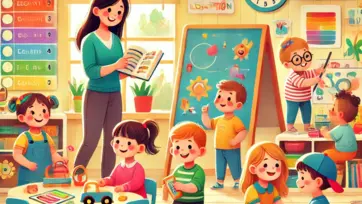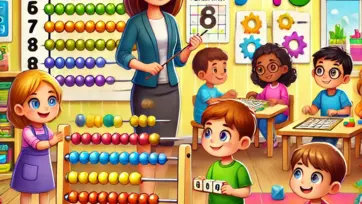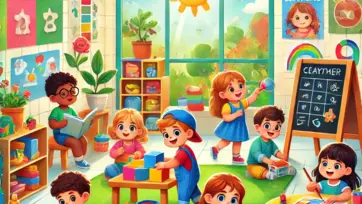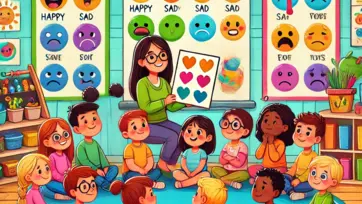Writing is a fundamental skill that plays a crucial role in a child’s education and future success. Developing strong writing skills early on can boost a child's confidence and help them express their thoughts clearly. However, many children struggle with writing, making it essential for parents and teachers to use engaging and effective techniques to improve their skills. Here are some simple and practical ways to help kids enhance their writing abilities.
1. Encourage Daily Writing Practice
Like any other skill, writing improves with regular practice. Encourage children to write every day, even if it’s just a few sentences.
Ways to Encourage Daily Writing:
- Keep a daily journal where they can write about their day or feelings.
- Set up a story-writing challenge where they create a short story each week.
- Encourage them to write letters or emails to family members or friends.
2. Make Writing Fun with Creative Prompts
Children are more likely to enjoy writing if they have fun prompts to work with.
Examples of Creative Writing Prompts:
- “If you could invent a new holiday, what would it be and how would people celebrate it?”
- “Describe a day in the life of your favorite animal.”
- “Write a letter to your future self.”
Using exciting topics makes writing enjoyable and fosters creativity.
3. Read Regularly to Improve Writing Skills
Reading and writing go hand in hand. Exposure to different writing styles, vocabulary, and sentence structures helps children develop their own writing abilities.
Tips to Encourage Reading:
- Read stories together and discuss the characters, plot, and message.
- Introduce books of various genres to expand their imagination.
- Let kids choose books that interest them to keep reading enjoyable.
4. Use Graphic Organizers for Better Organization
Graphic organizers help kids structure their thoughts before writing, making it easier to create well-organized content.
Types of Graphic Organizers:
- Mind Maps – Great for brainstorming ideas before writing.
- Story Maps – Helps outline characters, setting, and plot.
- Venn Diagrams – Useful for comparing and contrasting topics.
5. Teach Spelling and Grammar in a Fun Way
Strong spelling and grammar skills are essential for clear writing. Instead of making grammar lessons dull, turn them into engaging activities.
Fun Grammar and Spelling Activities:
- Use word puzzles and spelling games like Scrabble or Bananagrams.
- Have a “grammar detective” activity where kids find and correct mistakes in a short story.
- Play Mad Libs to make learning parts of speech fun.
6. Provide Constructive Feedback
Children need positive reinforcement and helpful feedback to improve their writing.
How to Give Effective Feedback:
- Praise their efforts and highlight their strengths.
- Gently correct mistakes by explaining why a correction is needed.
- Encourage self-editing by asking them to reread their work and identify areas for improvement.
7. Introduce Writing Games and Apps
There are many educational apps and online games designed to improve kids’ writing skills in a fun and interactive way.
Recommended Writing Apps and Games:
- Storybird – Helps kids create and publish their own illustrated stories.
- Grammarly for Kids – Provides grammar and spelling suggestions.
- Night Zookeeper – Encourages storytelling through interactive challenges.
8. Encourage Peer Review and Sharing
Letting kids share their writing with peers can make the process more engaging and build confidence.
How to Encourage Peer Review:
- Organize a writing club where kids read and discuss each other’s stories.
- Have storytelling sessions where they share their work out loud.
- Use collaborative writing where kids write a story together in turns.
9. Set Real-Life Writing Goals
When kids see the purpose of writing, they become more motivated to improve.
Examples of Real-Life Writing Goals:
- Writing a thank-you note for a gift.
- Creating a short comic book with illustrations.
- Writing a blog or newsletter about their favorite hobby.
10. Be a Role Model for Writing
Children often imitate what they see. If they notice parents and teachers writing often, they are more likely to develop an interest in writing themselves.
How to Set a Good Example:
- Share your own writing experiences with them.
- Write grocery lists, letters, or journals in front of them.
- Encourage family members to participate in writing activities together.
Conclusion
Improving kids’ writing skills doesn’t have to be difficult. By making writing fun, engaging, and part of their daily lives, children can develop a strong foundation in literacy. With creative prompts, interactive activities, and positive reinforcement, they will gain confidence and enjoy the process of expressing themselves through writing. Encouraging a love for writing early on sets them up for academic success and a lifelong appreciation for storytelling and communication.








